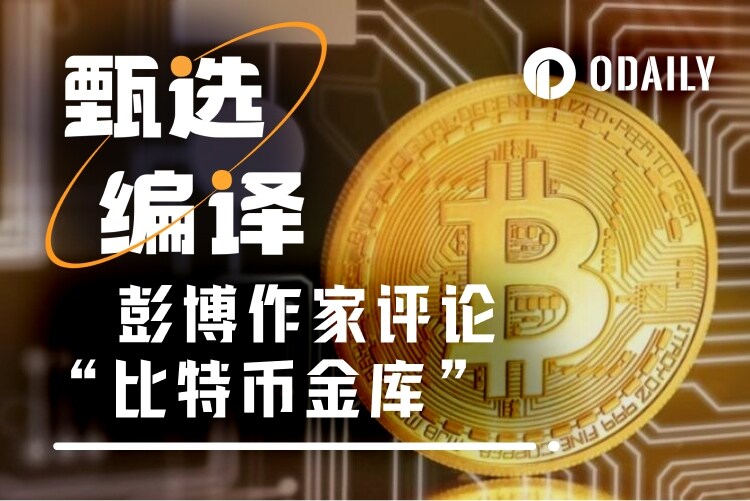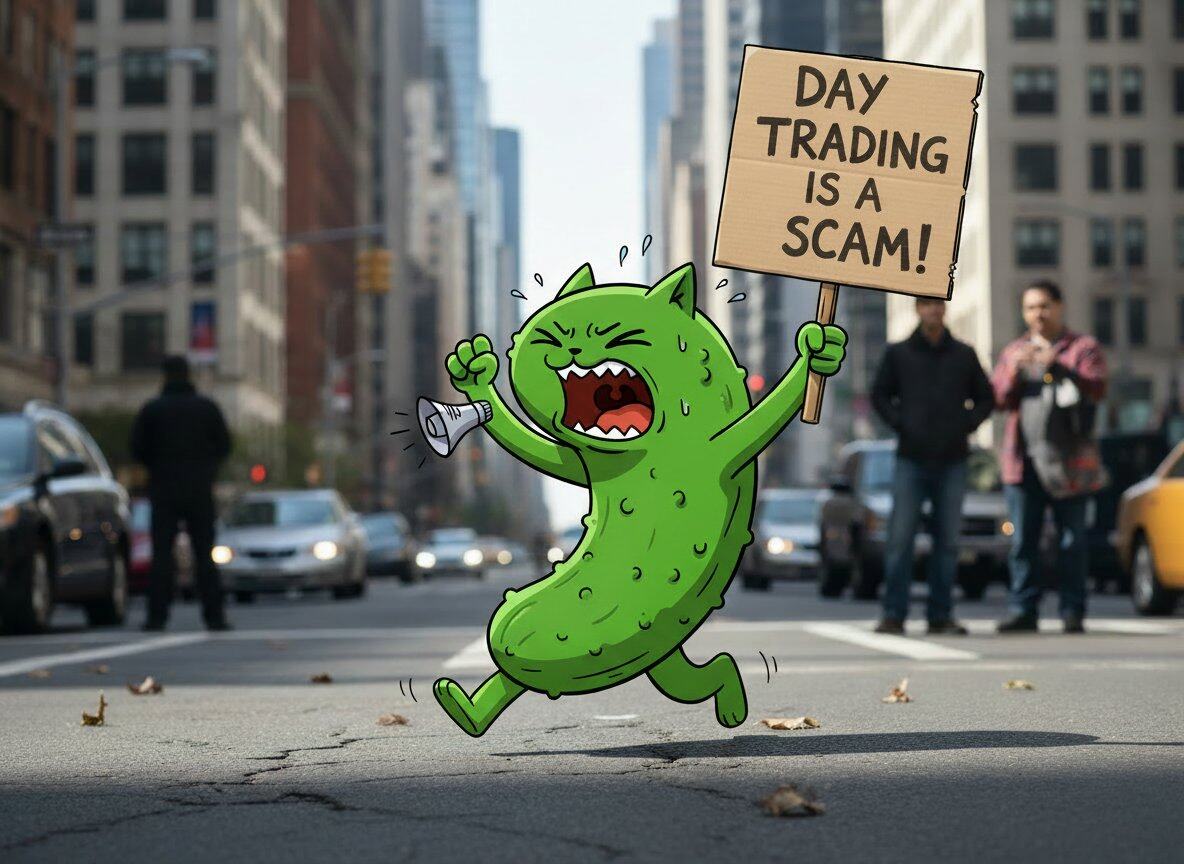Bloomberg Chief Financial Writer: When every company wants a Bitcoin treasury
- 核心观点:加密货币通过SPAC上市可获高溢价。
- 关键要素:
- 比特币金库公司上市溢价达100%。
- SPAC提供快速上市通道。
- 市场现多比特币金库公司竞争。
- 市场影响:加速加密货币金融化进程。
- 时效性标注:中期影响。

Bitcoin Vault
The basic logic is this: the U.S. stock market is willing to pay $2 for $1 worth of cryptocurrency. If you have a large amount of cryptocurrency, the best thing to do is to find a small U.S. public company to merge with so that your cryptocurrency can be worth twice as much. This phenomenon has created some strange market dynamics, and it will further lead to more strange phenomena. Two of them are worth noting:
First, if you own a lot of crypto, you definitely need a public company, so it makes sense to offer public company shells to crypto investors (especially small public companies with little existing business, so they can easily transform into pure crypto holding platforms) . For example, if you have $100 million in Bitcoin, you can make it worth $200 million by merging it with a public company, so you are willing to pay $40 million to its shareholders even if the public company is worthless except for its listing status.
Secondly, if you have a large amount of cryptocurrency, don’t sell it to cryptocurrency buyers, but sell it to the stock market. Suppose you have 1,000 bitcoins, and you can only get $118 million by selling them on the Bitcoin market, but if you package them into a cryptocurrency treasury company and list them, they can be worth $236 million.
On the first point, we often discuss cases where small public companies are acquired by crypto entrepreneurs and transformed into crypto vault companies. But this approach is both inefficient and haphazard: if you want to list a cryptocurrency publicly on a stock exchange, why do you have to find a defunct public biotech company, negotiate with its executives, seal the deal, and then fire the biotech researchers? Why don't investment banks just provide ready-made IPO shell resources so that you don't have to work hard to transform a biotech/toy/alcohol company into a crypto company , but can start from scratch?
Of course, banks do this business. This business - providing publicly listed shell companies - is the SPAC business (Special Purpose Acquisition Company). Cantor Fitzgerald LP (the CEO of which was once the US Secretary of Commerce) specializes in this business: both the conventional business of SPAC fundraising and the specialized business of merging SPACs with Bitcoin pools. We mentioned Cantor Equity Partners Inc in April. This is a SPAC under Cantor, which announced an agreement with Bitfinex/Tether and SoftBank to package their Bitcoin into a public company. The company will be called Twenty One Capital Inc, and the SPAC is currently trading at a premium of about 200% to the value of its Bitcoin. For Tether and SoftBank, this deal is very cost-effective. The same is true for Cantor, the SPAC sponsor, which will reap a huge return from this deal.
Here is the press release issued this morning:
Bitcoin Standard Treasury Company Goes Public Through Business Combination with Cantor Equity Partners I Inc
BSTR will launch with 30,021 Bitcoins on its balance sheet — which would make it the fourth-largest public Bitcoin vault — and with up to $1.5 billion in PIPE funding, the largest PIPE associated with a Bitcoin vault SPAC merger to date, with the SPAC itself contributing approximately $200 million (subject to redemptions)
BSTR Holdings Inc. (“BSTR” or the “Company”) announced today that it has signed a definitive agreement to combine its businesses with Cantor Equity Partners I, Inc. (“CEPO”) (NASDAQ: CEPO), a special purpose acquisition company sponsored by affiliates of Cantor Fitzgerald, a leading global financial services and real estate services holding company. Upon closing, the combined company is expected to trade under the ticker symbol “BSTR”…
The net proceeds will be used to acquire more Bitcoin and build a complete set of Bitcoin-native capital market products and consulting services.
Yes, that's right. BSTR owns about 30,021 bitcoins. If sold directly, these bitcoins are worth about $3.5 billion, but if sold through an IPO, the value should be at least $7 billion. Cantor Fitzgerald specializes in providing listed company resources for Bitcoin pools, so BSTR chose to merge with Cantor Equity Partners I - note that this is not the Cantor Equity Partners that did the Twenty One transaction - to bring its Bitcoin pool to the public market. The value of BSTR's Bitcoin on the stock exchange will far exceed its value as Bitcoin itself, and SPAC sponsor Cantor will get a share of it.
However, I want to focus on the second oddity: “If you have a lot of crypto, don’t sell it to crypto buyers.” Cantor Fitzgerald has launched a crypto vault company, Twenty One. Twenty One’s business model consists of (1) accumulating Bitcoin, (2) maintaining a public listing, and (3) talking a lot about innovation, the future of money, Bitcoin capital markets services, etc. BSTR’s business model is essentially the same. Twenty One is a Bitcoin pool, and BSTR is also a Bitcoin pool: why do they need to be listed separately? Why do investors need to choose between two essentially identical pure Bitcoin pools? (Not to mention that there are other similar companies on the market, as well as MicroStrategy. I just want to point out that two large Bitcoin pools went public through Cantor Fitzgerald’s SPAC within a few months of each other.)
You can imagine a scenario like this: BSTR people approach Cantor Fitzgerald and say, "We have a Bitcoin fund and need capital markets advice," and Cantor responds, "Great, we actually have a good relationship with Twenty One. We helped them go public. They have a large Bitcoin pool, have an 'enterprise structure that can support the construction of financial products based on Bitcoin,' and their business is based on 'strategically allocating capital to increase Bitcoin holdings per share.' And their stock is at a large premium to the value of Bitcoin. So our proposal is that we contact them, let them issue some shares, raise funds, and then acquire your Bitcoin pool at a good price. How about it?"
But this is stupid, because BSTR doesn't want to sell Bitcoin as Bitcoin. If you sell Bitcoin on the Bitcoin market, you can only trade at the price of Bitcoin! But if you package Bitcoin as a stock, you can sell it at a 100% premium! BSTR wants to go public itself, not sell the Bitcoin pool to others.
The Financial Times reported the deal on Tuesday:
Cantor Equity Partners 1, a blank-check firm that raised $200 million in cash in its initial public offering in January, is in late-stage talks with Adam Back, founder of cryptocurrency trading group Blockstream Capital, to acquire more than $3 billion worth of digital currencies, according to two people familiar with the matter.
The deal echoes Brandon Lutnick’s $3.6 billion cryptocurrency acquisition deal with SoftBank and Tether in April, and will further Cantor Fitzgerald’s strategy of using publicly traded shell companies to acquire Bitcoin, aiming to take advantage of the surge in digital currency prices amid U.S. President Donald Trump’s deregulatory policies…
Back and Blockstream Capital will exchange their bitcoin for shares in the Cantor vehicle, which will be renamed BSTR Holdings.
That is, one way to look at this deal is that Cantor is “acquiring” Blockstream’s Bitcoin, just as it previously “acquired” SoftBank and Tether’s Bitcoin. But Cantor is able to do so at a significant premium: instead of paying cash, it is paying Blockstream with shares in (newly formed) public Bitcoin companies, which typically trade at a 100%+ premium to the underlying Bitcoin. Cantor’s “currency” — shares in public Bitcoin companies — is worth more than cash.
Twenty One has a similar “currency” (its own shares). You could imagine a deal where Twenty One uses its shares to buy Blockstream’s bitcoins. But at what price? The core of the Bitcoin Vault business model is that Twenty One can issue shares at a premium, use the proceeds to buy bitcoins, and thus increase the number of bitcoins per share. But this is also the core of Blockstream’s model. Blockstream wants to get a premium for its bitcoin holdings, but Twenty One is not willing to pay a premium to acquire more bitcoins. (It wants to “strategically deploy capital to increase the number of bitcoins per share.”) There is a huge value created by moving bitcoins to the open market, and each holder of the Bitcoin pool wants to capture that value for themselves.
Is this model sustainable in the long run? If every big Bitcoiner can make more money by starting their own Bitcoin Treasure Company, how can the existing Bitcoin Treasure Companies continue to acquire more Bitcoin? Of course, there are still small investors; if you only have 0.1 Bitcoin, you won't go public specifically for this, so you will still sell it to MicroStrategy, Twenty One, BSTR or other companies. I think there will eventually be stock-for-stock mergers between Bitcoin Treasure Companies. Those with lower premiums will be acquired by those with higher premiums. I look forward to seeing the fairness opinions of these transactions.
In any case, BSTR doesn’t seem to be trading well so far: at midday today, the SPAC’s shares were trading around $13.93 per share, meaning BSTR is only trading at a ~39% premium for its Bitcoin reserves, well below the 100%+ premium I’d typically expect. Perhaps the market for these types of deals is finally starting to become saturated?
Meme coin market: Don’t ask, if you ask, you just don’t get the “atmosphere”
In traditional financial structuring, you work at a bank, and a client comes to you and says, “I want a tradable instrument X that reflects the price of something else, Y,” and you have to figure out how to link X and Y. Maybe you think you can design some arbitrage mechanism that allows holders of Y to exchange it for X, so that the prices of X and Y are synchronized. Maybe you can build a basket of Y, and X is the tradable ownership share of that basket. Maybe you call three banks every day to get quotes for Y, and then take the average as the daily settlement price of X. Maybe the settlement price of X can be derived based on the historical levels of some non-tradable index of Y. The specific solutions vary from case to case, but in general it is a difficult problem. For example, “I want a tradable instrument that reflects the price of US houses”: Sure, that’s a great idea, and we all want it, but which houses? How do you ensure that the instrument accurately reflects the house prices?
Then a really great financial innovation happened in the cryptocurrency space: you can do without all the complexities and just rely on “vibe.” You announce, “I’m going to launch a new token, HomePriceToken, that will reflect U.S. housing prices.” Then traditional finance people like me ask, “Wait, how does it reflect housing prices?” You answer, “It does, it’s in the name, isn’t it? This is HomePriceToken, what’s the problem?” I continue to ask, “What’s the arbitrage mechanism—” You say, “Come on, this is HomePriceToken.”
This discovery is often referred to as a "Meme coin," and I often joke about it, but it's an interesting concept. The core idea of a meme coin is that (1) it has a name that associates it with an underlying thing, and (2) it trades at a price that is related to that underlying thing, not because of some arbitrage mechanism, but simply because of the name. When people think more about Doge, the price of Dogecoin goes up, and that's it.
This is an interesting finding because it opens the door to the financialization of all kinds of things that normally don’t have prices at all. There’s a way to track the value of a house — though there are complications like liquidity and aggregation — but meme coins aren’t limited to traditional assets. Meme coins can reflect the hit song of the summer, the popularity of an actor, the health of American democracy. Not in a prediction market way — not based on some external fact — but in the world of meme coins. If DemocracyCoin is up, then democracy is good, and vice versa, don’t ask too many questions.
I’m not saying this isn’t ridiculous, it is, but it’s an entertaining kind of ridiculousness. Here’s Taylor Lorenz reporting on the Gen Z buzzword Meme Coin:
Every day, 20-year-old college student Boeshi would browse social media to find new words and phrases. He would track the use of words such as huzz, soyboy, baddie, and mewing, not only to chat with friends, but also to invest and make money.
As new Gen Z and Gen Alpha buzzwords continue to gain popularity, an entire financialized ecosystem has been quietly forming, with young people investing real money in meme coins tied to buzzwords in the hope of profiting from their popularity.
“The more these stupid words are used, the higher the price of the coin will be,” Boeshi said. “The more popular the words are, the more popular the coin will be.”
“Is there an arbitrage mechanism between vocabulary usage and coin price?” I interjected, but then my brain completely froze and Boeshi happily ignored my question.
In this emerging attention economy, virality is equivalent to monetary value. If a word is trending, the corresponding coin will skyrocket. When the heat fades, the price will also fall. "When a word starts to trend, you will see a correlation with the peak of Google searches," Boeshi said. "And then the decline is also related to the historical trend of the coin." Currently, there are dozens of popular meme coins available for sale on the alternative crypto site Pump.fun.
Okay, fine. Huzz. Rizz. Skibidi. Also, here’s the full research paper on memecoin manipulation by Alberto Maria Mongardini and Alessandro Mei:
Unlike utility-focused crypto assets like Bitcoin or Ethereum, meme coins derive their value primarily from community sentiment, making them vulnerable to manipulation. This study conducts a cross-chain analysis of the meme coin ecosystem, examining 34,988 tokens on Ethereum, BNB Smart Chain, Solana, and Base. We characterize the token economics of meme coins and track their growth through a three-month longitudinal analysis. We find that a staggering 82.6% of high-yielding tokens (>100%) show evidence of extensive use of artificial growth strategies designed to create a false appearance of market interest. These tactics include wash trading and what we define as liquidity pool-based price inflation (LPI), where small strategic purchases are used to induce dramatic price increases. We also find evidence of schemes designed to profit at the expense of investors, such as pump and dump and run. Of particular note, most of the tokens involved have previously experienced wash trading or LPI, suggesting that early manipulation often paves the way for subsequent exploitation. These findings reveal the prevalence of manipulative behavior among high-performing meme coins and suggest that their dramatic gains are often more likely to stem from coordinated human manipulation than from natural market dynamics.
Imagine launching one of those 17.4% of meme coins that weren't manipulated. Seems really lazy.



